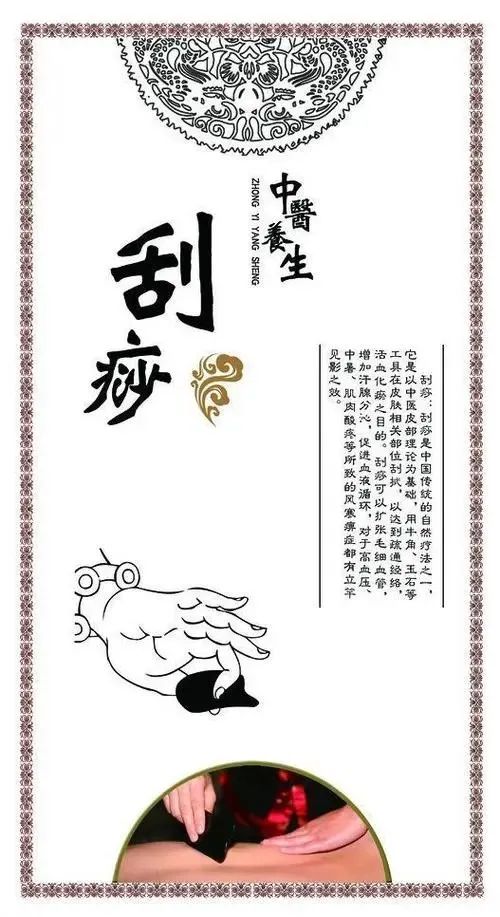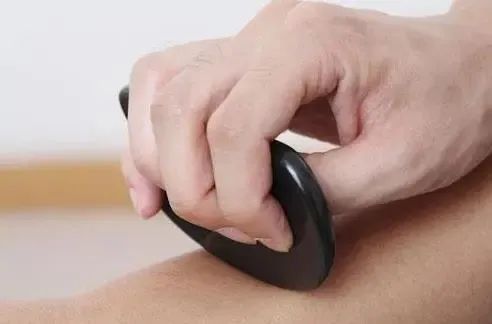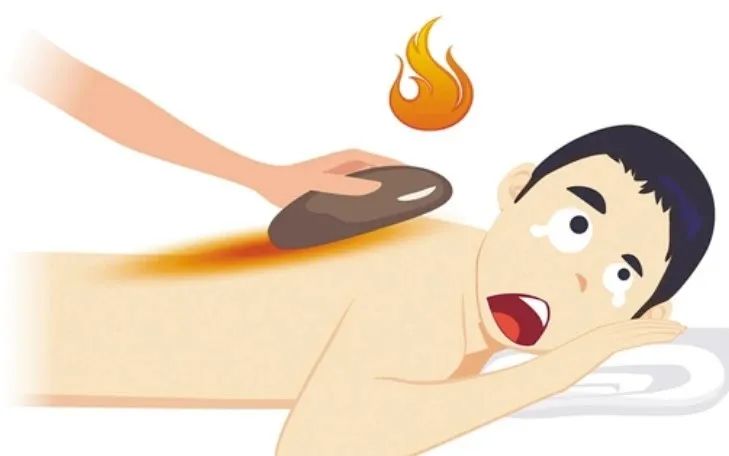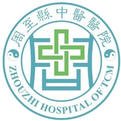
Gua Sha is one of the traditional natural therapies in China. It is based on the theories of the twelve meridians (shí èr jīng mài), eight extraordinary vessels (qí jīng bā mài), and the skin (pí bù). Using a Gua Sha board (made of materials such as horn, jade, or glass), practitioners scrape specific areas of the skin to stimulate the meridians, causing localized redness and congestion to achieve the goals of invigorating blood circulation, regulating yin and yang, relaxing muscles and meridians, and expelling toxins.


Therapeutic Effects of Gua Sha

1. Invigorating Blood and Dispelling Stasis: Regulates muscle contraction and relaxation, adjusts interstitial pressure, promotes blood circulation around the scraped tissues, and encourages the generation of new blood.
2. Regulating Yin and Yang: Stimulates organ function and balances yin and yang.
3. Relaxing Muscles and Unblocking Meridians: Gua Sha can alleviate pain, relieve muscle tension and spasms; where there is flow, there is no pain.
4. Expelling Toxins: The Gua Sha process dilates blood vessels, accelerates blood and lymph flow, enhances phagocytosis and transport, facilitating the expulsion of waste and toxins from the body, while nourishing tissue cells.


Indications for Gua Sha

Pain conditions: acute sprains, various soft tissue pains, various bone and joint diseases (sciatica, shoulder periarthritis, stiff neck, chronic low back pain, cervical spondylosis, lumbar spondylosis, osteophytes of the knee joint, etc.), various neuralgias and visceral spasmodic pains (neurogenic headache, vascular headache, trigeminal neuralgia, gastrointestinal spasms).
Internal medicine conditions: colds and fevers caused by external pathogens, headaches, coughs, sore throats, and heatstroke.
Health maintenance: disease prevention, post-illness recovery, strengthening the body, weight loss, beauty enhancement, acne and blemish removal, and delaying aging.


Precautions for Gua Sha
1. During Gua Sha treatment, ensure the room is warm, especially in winter to avoid cold and wind. In summer, avoid direct airflow from fans on the scraped areas.
2. Avoid taking cold showers within 24 hours after Gua Sha.
3. Do not perform Gua Sha on the same area until the previous marks have faded; wait 5-7 days, using the fading of the marks as a standard.
4. After Gua Sha, it is best to drink a cup of warm water (preferably slightly salted sugar water) and rest for 15-20 minutes.



Contraindications for Gua Sha
1. Conditions with a tendency to bleed, such as thrombocytopenia, leukemia, and allergic purpura, should not use Gua Sha.
2. Newly fractured areas should not be treated with Gua Sha until healing has occurred.
3. Avoid Gua Sha on unexplained lumps and malignant tumor sites.
4. Women should be cautious when scraping the lower abdomen during menstruation and should avoid it during pregnancy.
5. Gua Sha is not recommended for individuals who are hungry, have exercised, or are weak after significant blood loss.
Contributed by: Rehabilitation Department
Edited by: Publicity Department
(Images sourced from the internet)

